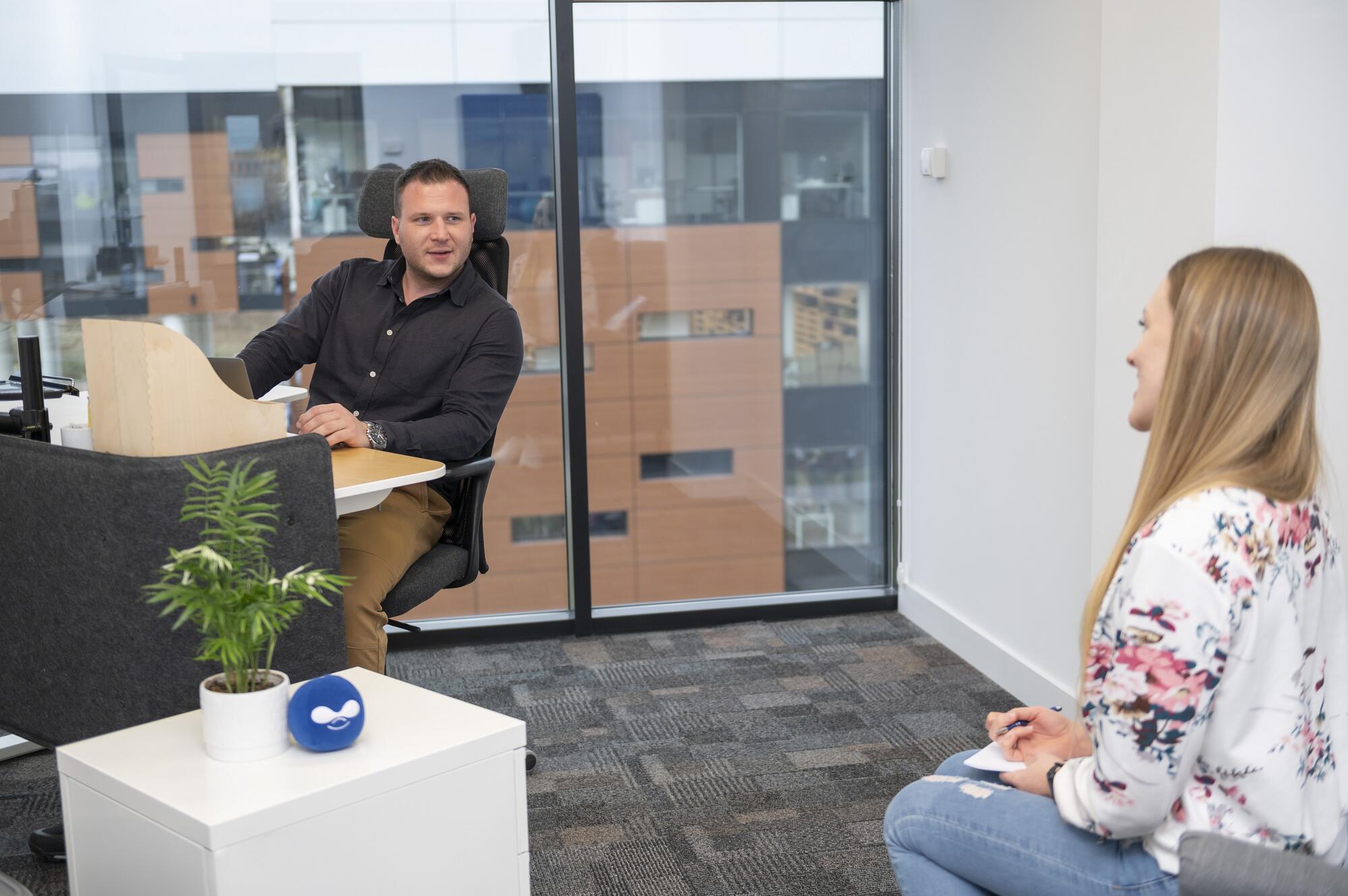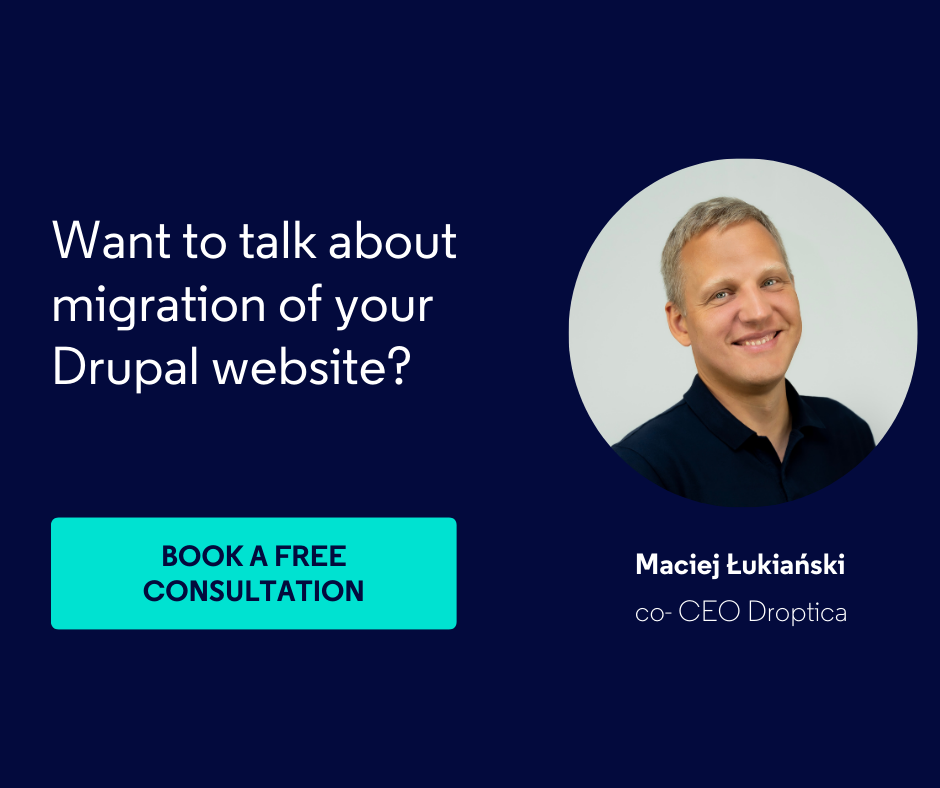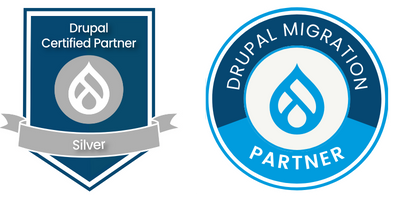Consequences of not updating Drupal 7 after the end of support
The end of support for Drupal 7 in January 2025 means no more security updates. Any new vulnerabilities will remain unpatched, leaving your website exposed to attacks. Hacks, data breaches, or DDoS attacks could seriously impact your website’s functionality and damage your company’s reputation. Lack of security also risks violating data protection regulations, leading to potential financial penalties.
The issue isn't limited to Drupal alone - you’ll also be forced to use an older version of PHP and libraries, as Drupal 7 will not be compatible with newer versions of these technologies. This means additional security risks not only within Drupal but across all connected technologies, which will have to remain in outdated versions. Maintaining such a system long-term becomes increasingly risky and costly.
While some companies may offer commercial support for Drupal 7, their limited availability will drive up prices for these services. In the long run, migrating to a newer version is not only safer but also more cost-effective.
Drupal migration options
Migrating from Drupal 7 to the latest version is more than just an upgrade – it’s a decision that will affect your website’s future performance and security. There are three primary migration options, each differing in time, cost, and scope of changes. Choosing the right strategy is key to the the successful Drupal migration and your website's continued growth.
What do you need to know about migrating from Drupal 7?
Migrating from Drupal 7 is a crucial step that significantly impacts your website’s security and functionality. Many businesses are wondering whether it’s necessary to migrate now or if they can delay the process. Below, we explain the risks of staying on Drupal 7, what you should consider before making a decision, and why migration is an investment in the future of your business.
What is needed for the Drupal migration services?
To ensure a smooth and effective migration from Drupal 7 to the latest version, proper preparation and access to key tools are essential. Here's what is required:
These two tools - the script and the checklist - allow for a seamless migration process and ensure that the new version of your website is fully tailored to your business needs.
How does the Drupal migration process work?
Migrating from Drupal 7 to the latest version involves several key stages. Below is a detailed overview of the entire migration process at Droptica. This well-structured migration guarantees a seamless transfer of your website and ensures its stable operation on the latest version of Drupal.
How much does a Drupal 7 migration cost?
The cost of migrating from Drupal 7 to the latest version depends on the project's complexity, the scope of changes being implemented, and the client's specific needs. Below are the basic pricing options:
Each project is priced individually depending on the specifics of the site and the client’s expectations.
What you gain by choosing a Drupal 7 migration with Droptica
What you should know before choosing Droptica for migration
Examples of our migrations – from simple to complex
These two examples demonstrate the extremes – from simple, fast migrations to highly complex projects. As you can see, we can handle both small migrations and comprehensive, multi-layered deployments, tailored to each client's specific needs.
MSDynamicsWorld (MSDW) - Case Study
Read our articles about migrating websites
Check our articles with technical experts’ tips on Drupal migration and updates.
Watch Droptica Webinar: The Future After Drupal 7
Frequently Asked Questions (FAQs)
If certain modules are not compatible, we’ll suggest alternative solutions. This could be using another module with similar functionality or rewriting the existing module for the latest version of Drupal based on the Drupal 7 code. Each case is evaluated individually to find the most optimal solution.
During the migration, we’ll transfer the entire URL structure (URL aliases), page titles, and header tag structure (H1, H2, H3...). If your website has a sitemap, robots.txt, or other SEO-related features, we’ll also migrate those. We assess every SEO element during the analysis stage to ensure full compliance and to maintain your website’s search engine rankings.
After the migration, we enter a stabilization phase during which we monitor the system's performance. If any issues arise, we promptly fix them. Following the stabilization phase, we offer support packages, which include regular Drupal updates to newer versions and ongoing enhancements and optimizations to ensure long-term stability.


































